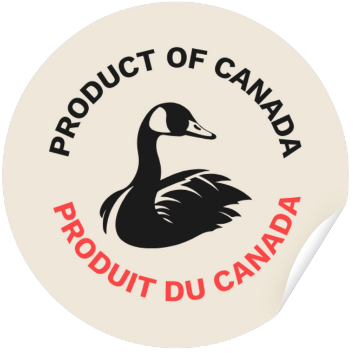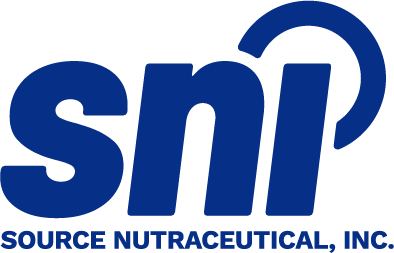“Product of Canada” vs. “Made in Canada” Differences and Conditions of Use
Product labelling in Canada requires a careful approach, as many claims that appear on products are subject to regulations and must meet specific requirements to ensure compliance. While some companies may see these requirements as additional hurdles, regulating certain product claims is essential for both consumers and brands that invest the effort to ensure their products adhere to the necessary standards.
A topic that has gained attention is the distinction between products labelled as “Product of Canada” and “Made in Canada.” What is the difference? What are the conditions for using these labels? Find out all this and more in our blog post below.
Understanding “Product of Canada” Labels

Understanding “Product of Canada” labels can be confusing, as some products may seem to fit the definition we commonly associate with this wording. Many companies assume that any product manufactured in Canada automatically qualifies for this claim. However, it is essential to follow the definition provided by Health Canada, the Canadian Food Inspection Agency (CFIA), and the Competition Bureau.
The Competition Bureau permit the “Product of Canada” label only when all or nearly all expenses, such as ingredients, processing, and labour, originate within Canada. To meet this standard:
- At least 98% of the total direct costs associated with producing or manufacturing the product must be Canadian.
- The final significant transformation of the product must occur in Canada.
If the above conditions are met, a “Product of Canada” claim can appear on product labelling.
“Product of Canada” Examples
A food product that is manufactured and packaged in Canada with 98% Canadian ingredients qualifies for the “Product of Canada” label. However, if a product contains 98% Canadian ingredients but is manufactured and labelled in the U.S., it does not meet the criteria, as the production and manufacturing costs were incurred outside Canada.
Similarly, products that are manufactured and packaged in Canada but contain only 50% Canadian ingredients do not qualify for the “Product of Canada” claim, as they fail to meet the 98% requirement for total ingredient costs.
Finally, a product that meets the 98% direct cost requirement but undergoes a significant transformation outside Canada does not qualify for the “Product of Canada” claim. For example, if 100% Canadian strawberries are frozen outside the country, they would no longer be eligible. In this case, the common name of the product changes from “strawberries” to “frozen strawberries” due to the processing method. Even if 98% of the labour costs are Canadian, the substantial transformation requirement is not met, making the product ineligible for this label.
“Substantial Transformation” Considerations
It is important that manufacturers pay close attention to both requirements to qualify for the “Product of Canada” claim and ensure that their products are not processed outside of the country in a manner that changes its nature. CFIA defines “substantial transformation” as the following:
“A substantial transformation occurs when a food product undergoes processing which changes its nature and becomes a new product bearing a new name commonly understood by the consumer.
For example, the processing of cheese, dough, sauce and other ingredients to create a pizza would be considered a substantial transformation.” (CFIA, 2023)
In cases where products were manufactured in Canada and contain less than 98% ingredients of Canadian origin, “Made in Canada” claim might be more acceptable.
Understanding “Made in Canada” Labels

Unliked “Product of Canada” statement, “Made in Canada” statement is less stringent in its requirements and allows room for flexibility. Products that do not qualify for “Product of Canada” claims can instead use “Made in Canada” claims provided the following conditions are met:
- The last substantial transformation occurs in Canada.
- A qualifying statement is included as a part of the label.
- For non-food products: At least 51% of total direct costs (ingredients, labour, processing) must be Canadian.
A qualifying statement should be used on such products to further specify the manner in which the product was made. Examples include, but are not limited to, “Made in Canada with domestic and imported ingredients”, “Made in Canada with imported ingredients”, “Made in Canada with 55% domestic and 45% imported ingredients”.
“Made in Canada” Examples

A food product that is manufactured and undergoes substantial transformation in Canada, even if made entirely from imported ingredients, qualifies for the “Made in Canada” claim and can be labelled as “Made in Canada from imported ingredients.” However, if the same product is sent outside Canada for further processing, such as blending into a paste instead of remaining a dried whole ingredient, it no longer qualifies, as its common name and form have changed.
Similarly, a natural health product (NHP) that is manufactured and packaged in Canada can carry the “Made in Canada with domestic and imported ingredients” label if more than 51% of its direct costs (including ingredients, labour, and processing) are incurred in Canada. However, if a powdered formula is sent abroad for encapsulation and then returned to Canada, it has undergone a substantial transformation (changing from powder to capsules). As a result, the product is no longer eligible for the “Made in Canada” claim.
For products that do not meet the conditions of “Made in Canada” claims, additional labelling consideration should be made.
Other Labelling Options
If your product does not qualify for the “Product of Canada” or “Made in Canada” claims, alternative labelling options may be used, as long as they provide clear and accurate information about the product.
When using alternative claims, it is essential to ensure they do not suggest the same meaning as “Made in Canada” by using terms like “manufactured.” Any implied claims must meet the established requirements and are considered equivalent to explicit claims. In other words, implying a claim is the same as making one, so care should be taken to avoid misleading wording or pictograms.
However, claims such as “Encapsulated in Canada” or “Formulated in Canada” are allowed when a product does not meet the criteria for the “Made in Canada” or “Product of Canada” claims, provided that these claims are truthful and not misleading.

Additionally, statements referring to specific ingredients or product components are also permitted as long as they meet applicable criteria. For example, labels like “Made with Canadian strawberries” or “Filling Made in Canada with domestic and imported ingredients” are acceptable, provided that the “Made in Canada” conditions are met for those particular components.
Enforcement and General Principles
Enforcement of marketing claims follows the Competition and Compliance Framework, with oversight depending on the product type. Food labels in Canada are primarily regulated by the CFIA, with the Competition Bureau intervening in cases of false or misleading advertising. NHPs fall under Health Canada, with oversight from the Natural and Non-prescription Health Products Directorate (NNHPD) and enforcement by the Regulatory Operations and Enforcement Branch (ROEB). While corrective actions may vary depending on the issue, the regulatory requirements remain consistent across both categories.
Monetary penalties for deceptive marketing depend on prior violations and business type. First-time offenders can face fines up to $750,000 or three times the benefit from deceptive marketing, rising to $1 million for repeat violations. Corporate offenders face fines up to $10 million, plus an additional 3% of global gross revenue, which can increase to $15 million.
Under the Competition Act, penalties for false or misleading statements can include up to $200,000 in fines or one year in prison for a summary conviction, and up to 14 years in prison with a court-determined fine for an indictment conviction. Restitution may also be ordered.
Under Consumer Protection Laws, dealers can be fined up to $5,000 for a summary conviction or up to $10,000 for an indictment, with possible restitution in both cases.
Navigating Important Labelling Considerations
In Canada, product labelling is regulated to ensure clarity, accuracy, and consumer safety. Businesses must ensure their labels comply with the country’s labelling laws, which are outlined by various government agencies, including the Competition Bureau and Health Canada. These regulations cover aspects like language requirements, ingredient lists, nutritional information, and advertisement.
To find the specific rules and guidelines for labelling, businesses should consult the CFIA, Health Canada, and other relevant regulatory bodies. These agencies provide detailed resources on the requirements for labelling food, health products, and other consumer goods.
For those looking to enter the Canadian market, understanding and following these regulations is crucial to ensure compliance and meet consumer expectations.

Looking for guidance on “Made in Canada” or “Product of Canada” labelling requirements? Our team can help. We will assess your products to determine if they qualify for these claims and ensure your labels meet regulatory standards. Contact us today to learn how SNI can support your compliance needs.
💡 Book a discovery call today to streamline the process and succeed in the Canadian market!
📩 info@sourcenutra.com
Final Remarks
Navigating the complexities of product labelling in Canada is essential for businesses to ensure compliance with regulatory requirements and maintain consumer trust. Whether using the “Product of Canada” or “Made in Canada” labels, it is crucial to understand the specific criteria outlined by the CFIA and other regulatory bodies. Adhering to these guidelines not only helps avoid penalties but also promotes transparency and supports informed consumer choices. Businesses should stay informed of the regulations, seek professional guidance when needed, and always ensure that their product labels are truthful and accurate. By doing so, they can build credibility and successfully operate in the Canadian market.
Key Takeaways
- “Product of Canada” Label: A product can qualify for the “Product of Canada” label if it is manufactured and packaged in Canada with at least 98% Canadian ingredients. However, if the product is processed or labelled outside of Canada, it is not eligible. Additionally, if the product undergoes substantial transformation outside Canada, such as freezing, it no longer qualifies.
- “Made in Canada” Label: The “Made in Canada” label is less strict than the “Product of Canada” claim. Products must undergo substantial transformation in Canada, and for non-food items, at least 51% of direct costs (ingredients, labour, processing) must be Canadian. If a product is processed outside of Canada and its form or name changes, it no longer qualifies.
- Other Labelling Options: If a product doesn’t meet the “Product of Canada” or “Made in Canada” criteria, alternative claims can be used, such as “Encapsulated in Canada” or “Formulated in Canada,” provided they are accurate and not misleading.
- Enforcement: The Competition Bureau and CFIA enforce labelling regulations. Deceptive marketing can result in significant penalties, with fines up to $750,000 for first-time offenders, and up to $10 million for corporate violations. Prison sentences of up to 14 years may also apply for misleading claims.
- Regulatory Compliance: To ensure compliance, businesses must follow labelling guidelines set by regulatory bodies like the CFIA and Health Canada. Understanding these rules is vital for businesses entering the Canadian market to meet legal requirements and consumer expectations.
FAQ
What’s the difference between “Product of Canada” and “Made in Canada” labels?
The “Product of Canada” label indicates that virtually all (98%) of the product’s ingredients, production, processing, and labour come from Canada. On the other hand, “Made in Canada” refers to products where the last substantial transformation took place in Canada, even if some ingredients are imported. For “Made in Canada” claims, a qualifying statement must be included, such as “Made in Canada from domestic and imported ingredients.”
What does “substantial transformation” mean in Canada?
Substantial transformation happens when a product is processed in a way that changes its nature, resulting in a new product with a new name that consumers easily understand. For example, turning cheese, dough, sauce, and other ingredients into a pizza would be considered a substantial transformation.
Can a product with imported ingredients still be labelled “Made in Canada”?
Yes, a product can be labelled “Made in Canada” even if it contains imported ingredients, as long as it undergoes substantial transformation in Canada. However, a qualifying statement must be included to indicate that some ingredients are imported, such as “Made in Canada from imported ingredients.”
Are there penalties for incorrectly using the “Product of Canada” or “Made in Canada” labels?
Yes, using these labels incorrectly can result in significant penalties. Companies that make false origin claims may face fines of uPp to $10 million, while individuals can be fined up to $750,000. These rules are enforced by agencies like the Competition Bureau and the Canadian Food Inspection Agency (CFIA).
How can consumers identify Canadian-made products?
Consumers can look for the “Product of Canada” or “Made in Canada” labels on products. Additionally, some retailers use symbols, such as a maple leaf, to help consumers identify Canadian-made goods. However, it’s important to verify these claims to ensure they are accurate, as there have been cases of mislabelling.



